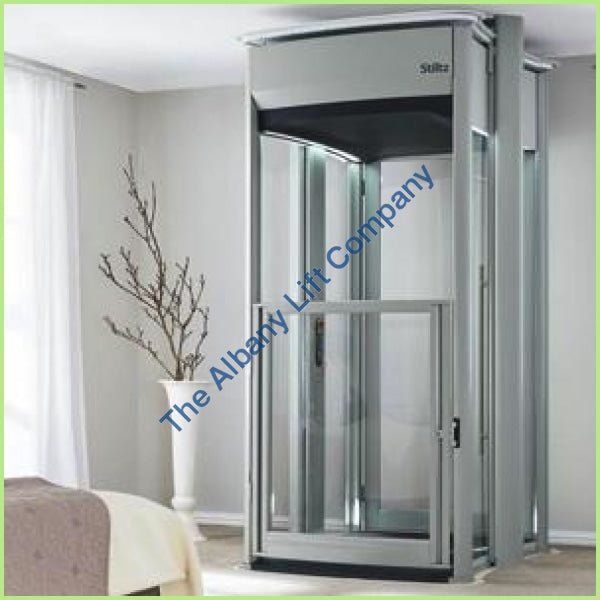London Lift Company: Trusted Professionals for All Your Upright Transport Requirements
London Lift Company: Trusted Professionals for All Your Upright Transport Requirements
Blog Article
Diving Into the Globe of Lifts: Usual Concerns Encountered by Different Lift Systems
As we browse via the upright transportation systems of contemporary structures, lifts stick out as an indispensable element of our day-to-days live. However, behind their seamless procedure lies a world of detailed mechanisms that can sometimes encounter obstacles. From hydraulic lifts to grip systems and machine-room-less designs, each lift kind includes its set of usual issues. Understanding these obstacles is essential for guaranteeing the smooth functioning of these important systems. Let's explore the complexities that underlie the procedure of elevators and the prospective issues that can occur, clarifying the elaborate internet of lift devices.
Hydraulic Elevators
Hydraulic elevators, commonly preferred for low-rise buildings, make use of fluid pressure to manage the motion of the lift car (lift repair companies). This mechanism includes a hydraulic pump pressing oil right into a cylinder, causing the elevator to relocate the preferred direction. While hydraulic elevators are known for their quiet and smooth operation, they do feature their very own collection of typical issues
One widespread issue with hydraulic elevators is oil leakage. In addition, concerns with the control system, such as malfunctioning valves or a malfunctioning pump, can trigger disruptions in the lift's activity.
Routine maintenance and punctual repair services are important to guarantee the smooth performance of hydraulic elevators. By addressing these common concerns proactively, structure proprietors can decrease downtime and ensure the safety and effectiveness of their vertical transport system.
Grip Elevators
When considering upright transportation systems in buildings, an additional typical kind in addition to hydraulic elevators is the traction lift. Traction lifts operate making use of a system of ropes and counterweights that relocate the elevator vehicle by clutching onto the hoist ropes. This system permits smoother and much faster vertical transportation contrasted to hydraulic systems.
One of the usual issues encountered by traction lifts is rope wear. The constant activity of the ropes within the traction system can lead to damage over time, potentially creating the elevator to malfunction or become harmful for usage. Regular examinations and maintenance of the ropes are important to make sure the lift's appropriate performance and security.
Another problem that grip elevators may run into is connected to the control system. Issues with the control system can lead to problems such as irregular movement, delays in feedback times, or even complete closures. Routine testing and maintenance of the control system are vital to stop such problems and make sure the lift's reliability.
Machine-Room-Less (MRL) Lifts

One of the vital components of MRL lifts is the small gearless traction maker that is installed within the hoistway. This equipment effectively drives the elevator auto without the need for cumbersome equipment located in standard grip elevators. In addition, MRL elevators usually use a weight system to stabilize the cars and truck, further boosting their energy performance.
Despite their advantages, MRL lifts might face difficulties associated with upkeep and repair because of the restricted room for equipment installation. Access for servicing components within the shaft can be limited, calling for specialized training for service technicians. Correct upkeep timetables and regular inspections are important to make sure the ongoing smooth operation of MRL lifts.
Overloading and Weight Limit Issues
Are elevators furnished to deal with excess weight lots effectively and safely? Overwhelming and weight restriction problems are essential worries in elevator procedures. Elevator producers design lifts with specific weight capabilities to ensure passenger safety and find more info devices durability. Surpassing these weight limits can cause various problems, consisting of mechanical failures, delays, and safety risks.
When elevators are strained, it puts too much stress on the electric motor, cords, and other elements, possibly creating breakdowns or malfunctions. If they spot excess weight, security mechanisms such as sensing units and overload sensors are in place to avoid lifts from moving. Additionally, going beyond weight limitations can cause enhanced power consumption and damage on the elevator system.
To minimize overwhelming issues, developing managers must plainly present weight limits in elevators and enlighten residents on the importance of adhering to these constraints - lift repair companies. Routine maintenance checks by certified specialists can additionally assist guarantee that elevators are operating within secure weight parameters. By attending to overloading and weight restriction issues proactively, building owners can enhance lift security and effectiveness
Electrical System Failures
Going beyond weight restrictions in elevators can not just lead to mechanical issues however likewise potentially contribute to electric system failings within the lift facilities. Electrical system failures are a vital worry in elevator operation, as they can cause unanticipated closures, malfunctions, or even safety hazards.
Normal maintenance and examinations are vital to recognize and resolve potential electric problems without delay, making sure the safe More about the author and effective procedure of lift systems. By adhering to weight limitations and performing regular electric system checks, building owners can minimize the risk of electric failings in elevators.
Final Thought

Hydraulic lifts, commonly chosen for low-rise structures, use fluid stress to control the activity of the elevator auto.When thinking about upright transportation systems in structures, another usual type aside from hydraulic lifts is the traction lift. Grip elevators run using a system of ropes and weights that relocate the elevator auto by grasping onto the hoist ropes. Unlike conventional lifts that require a separate equipment room to house the devices, MRL lifts incorporate most Read Full Report of the elements within the shaft, eliminating the requirement for a dedicated maker area.In conclusion, elevators deal with usual issues such as hydraulic malfunctions, grip system failings, and electrical system issues.
Report this page